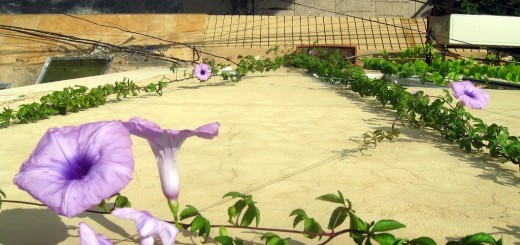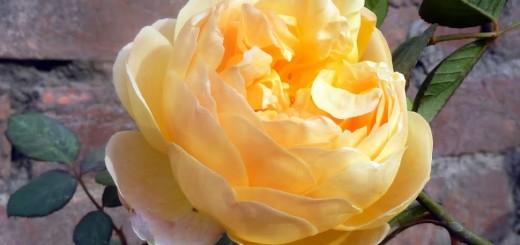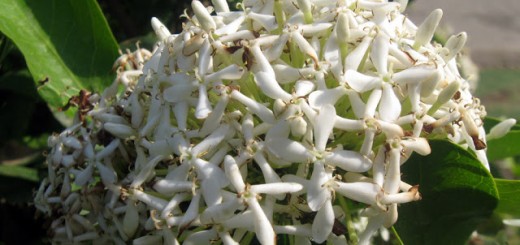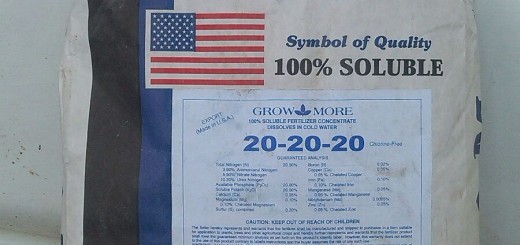2- Examples of large seeds are morning glory, sweet peas, bauhinia etc. Examples of small seeds include poppy, petunia, buddleja etc.
3- After seed is germinated, seedling will lean towards sun so keep changing the direction of container so that it remains even.
Larger the seed, deeper it will be sown. Smaller the seed, closer it will be to the soil. Very small seeds which can not be handled through fingers are mostly surface sown. Surface sown means just place the seeds on the soil surface and do not cover. Very light sprinkling of coco-peat or peat moss is beneficial in most cases.Sowing time
For spring blooming annuals, seed is sown in september-November
For summer blooming annuals, seed is sown in February-April
For perennials, seed can be sown either in September-october or in Spring (March). The optimum temperature for germination of most seeds is around 20C. Extreme heat and extreme cold both are not good for sowing seeds.
Sowing Medium
Whether it is soil based medium or soil-less medium, it must be well drained. If water stands, seeds will rot. This is the reason most seed germination mixes include sand as sand improves drainage. For precious seeds, vermiculite can be used. Following mixes are successful in my experience:
– 30% sand, 30% garden soil, 30% peat moss
– 50% peat moss, 30% leaf mold, 20% sand
Fertilizer
Somewhere i read 50% sand and 50% leaf mold but not tried yet. IF using vermiculite you can use top few inches of vermiculite while bottom can be filled with good soil mix having some light fertilizer. It is not only cost effective but also logical. Vermiculite will help in germination of seeds and when roots will develop and reach bottom they will get fertilizer.
Note that seeds do not need any fertilizer for germination, strong fertilizer will burn the seedling or seeds might not germinate. Best bet is add very little leaf mold. Another option is whenever you water your seedlings, add 1/6 strength liquid fertilizer in every watering.
Watering
Before sowing the seed, water the container or soil bed thoroughly. After hour an hour, sow the seeds. After that keep the soil moist but not damp. Always use spray gun to water, the one which hair dressers use. To keep it moist and not damp, there are few options. First, use moisture meter to check the moisture, most PH meters come with moisture meter. Second, check soil color, it will tell you whether you need to water or not. third, you can check the container weight but it is more successful in clay pots as plastic pots are already light.
Try bottom watering the seeds and seedlings. There are few ways to achieve it. First, sow in peat pots and place them in 1 inch of water, the water will automatically flow up. Second option is, sow in plastic seeds trays with bottom holes. Place the seed tray in water so that the water is half an inch over the tray from bottom. Soil medium must be light to achieve that. Check bottom watering on internet as well. There are self watering trays as well and they are best for this purpose
Prevent Damping off
In hot and humid weather mostly in monsoon and some times in march april, seedlings suffer from damping off. In this disease, seedlings fall flat. Try sprinkling cinnamon powder on the surface before sowing seeds and improve air circulation. There are some commercial anti-fungicide as well.
Which container to use
Remember clay pots need frequent watering as they dry out quickly. plastic pots retain moisture so less watering is required. I prefer plastic pots as i lost lots of seeds due to dry out problems. In spring sowing plastic containers help less watering. In fall sowing, clay ones are also OK as weather is not harsh. I never had the problem of air circulation in case of plastic pots.
Top 2 techniques for germinating difficult seeds
There are 2 techniques which i use:
1- Soon after sowing the seeds, pack the container in a polyethene bag which must be transparent so that light goes in. When you see the seed germinated, gradually acclimatize the seedling with outside temperature. Open it daily for few hours then increase it and then after few days remove it. This one i use mostly for very small seeds.
2- This method is applicable only for those seeds which are large and can be handled individually. Does not apply to very small seeds. place the seeds between moist sheets of cotton (which is used in wounds) and place them somewhere bright. just when you notice the cotton is starting to dry, water it through sprayer. This is a variation of famous Zip-Lock baggie technique for germinating seeds.
In my opinion, October is the best time to sow all perennial seeds, as the plants get established before the intense summer heat. If you sow in spring then seedling will have to go through strong summer heat. However some seeds including bignonia family seeds, passifloras, hardenbergia etc. needs temperatures into 30’s to germinate.








Great post, you have pointed out some superb details, I will tell my friends that this is a very informative blog thanks.
IT Company India